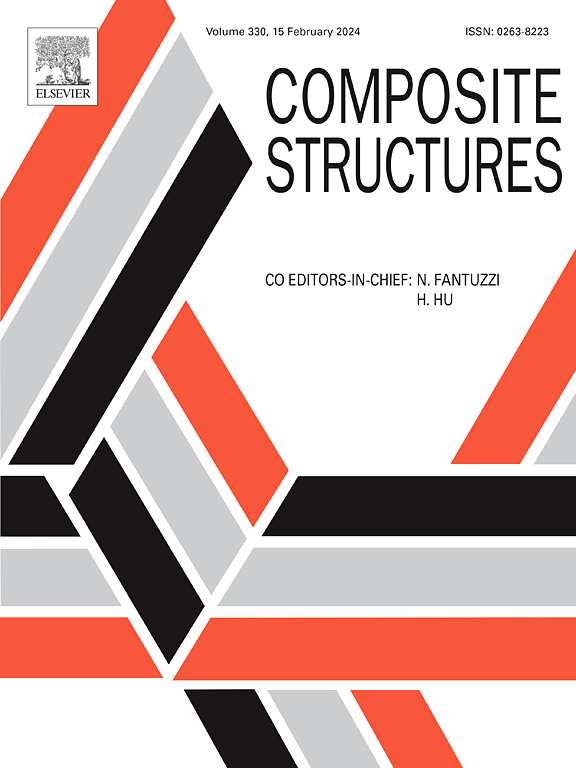Thermal transparency of tunable thermal metamaterials composed of composite cylinder or sphere with imperfect interface
IF 6.3
2区 材料科学
Q1 MATERIALS SCIENCE, COMPOSITES
引用次数: 0
Abstract
We present an exact analysis of tunable thermal metamaterials made of composite cylinder or sphere with imperfect interface effects. The composite cylinder or sphere is composed of an isotropic core coated with a layer of curvilinearly anisotropic material. The interface between the core and the anisotropic layer could be imperfectly bonded, either with low-conductivity or high-conductivity type of interface. Based on an effective medium theory of neutral inclusion, we show that it is possible to balance in different ways among the material and geometric parameters, together with bonding parameters, so that the composite cylinder or sphere is thermally transparent to the background medium. We show how these parameters will affect the thermal intensity within our targeted region, either greatly enhanced or shielded. Remarkably, we show that there exists an interesting link between the core conductivity and the imperfect interface parameter for either type of imperfect interface, highlighting how the effect of core conductivity can be correlated exactly to the effect of bonding imperfectness. We also validate our analytic results with numerical simulations based on finite element calculations. Our findings provide insightful guidance towards the understanding of thermal transport mechanism across imperfect interfaces in thermal metamaterials.
具有非完美界面的圆柱形或球形复合材料可调热超材料的热透明度
本文对具有非完美界面效应的圆柱形或球形复合材料的可调热超材料进行了精确分析。所述复合圆柱体或球体由各向同性的芯组成,芯上涂有一层曲线型各向异性材料。岩心与各向异性层之间的界面可以不完美结合,可以是低电导率型界面,也可以是高电导率型界面。基于中性包合的有效介质理论,我们证明了在材料和几何参数以及键合参数之间以不同的方式平衡是可能的,从而使复合材料圆柱体或球体对背景介质是热透明的。我们展示了这些参数将如何影响目标区域内的热强度,无论是大大增强还是屏蔽。值得注意的是,我们表明,对于任何一种类型的不完美界面,在岩心电导率和不完美界面参数之间存在有趣的联系,突出了岩心电导率的影响如何与键合不完美的影响精确相关。通过有限元数值模拟验证了分析结果。我们的发现为理解热超材料中不完美界面的热输运机制提供了有见地的指导。
本文章由计算机程序翻译,如有差异,请以英文原文为准。
求助全文
约1分钟内获得全文
求助全文
来源期刊

Composite Structures
工程技术-材料科学:复合
CiteScore
12.00
自引率
12.70%
发文量
1246
审稿时长
78 days
期刊介绍:
The past few decades have seen outstanding advances in the use of composite materials in structural applications. There can be little doubt that, within engineering circles, composites have revolutionised traditional design concepts and made possible an unparalleled range of new and exciting possibilities as viable materials for construction. Composite Structures, an International Journal, disseminates knowledge between users, manufacturers, designers and researchers involved in structures or structural components manufactured using composite materials.
The journal publishes papers which contribute to knowledge in the use of composite materials in engineering structures. Papers deal with design, research and development studies, experimental investigations, theoretical analysis and fabrication techniques relevant to the application of composites in load-bearing components for assemblies, ranging from individual components such as plates and shells to complete composite structures.
 求助内容:
求助内容: 应助结果提醒方式:
应助结果提醒方式:


